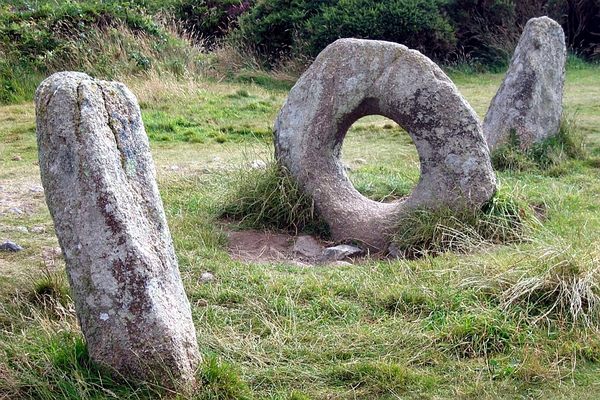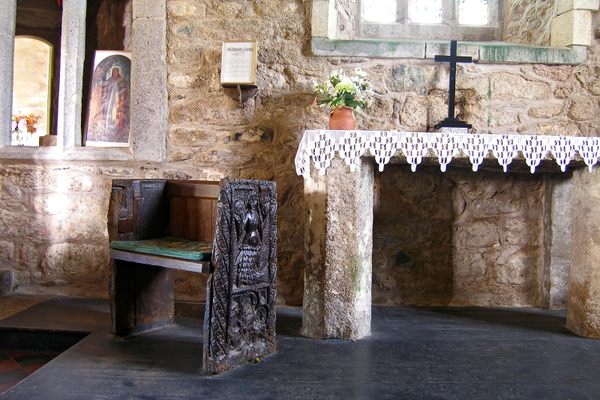Lanyon Quoit
A neolithic dolmen that was rebuilt after collapsing during the 19th century.
This entry is a stub
The Lanyon Quoit is a dolmen, or Neolithic tomb, found just off the B3306 in Cornwall.
You can see the structure from the road if you stand on the roof of your car and peer over the hedgerows, but it’s well worth the two-minute walk to experience it firsthand. In the field, a large flat stone, or quoit weighing around 12 tons, rest on top of three upright stones. The dolmen was constructed around 2500 BC as part of a barrow, or chambered tomb, the remains of which are barely visible in the surrounding landscape today. Lanyon means “cold pool” in the native Cornish language. The site is also known as “The Giant’s Table,” for obvious reasons, and has been mentioned in Arthurian legends.
Originally, the dolmen was much higher, perhaps tall enough to accommodate a horse and rider beneath it. However, after a storm in 1815, the ancient structure collapsed. In the course of the 1824 reconstruction by locals, one of the supports broke. With only three uprights remaining, the quoit was lowered about five feet and rotated ninety degrees from its original orientation. Today it’s barely five feet from ground to ceiling, so leave your horses home. The surrounding moors are windy and beautiful in themselves, and the spot is perfect for a respite on the drive from St Ives to Penzance.
Know Before You Go
The land is in the National Trust, so entrance is free, with some parking on the road. Lanyon Quoit is found on an unnamed road off the the B3306 which occasionally trails off into a one-lane, two-way, gravel-covered trail deep within the hedgerows. Not handicap accessible.

















Follow us on Twitter to get the latest on the world's hidden wonders.
Like us on Facebook to get the latest on the world's hidden wonders.
Follow us on Twitter Like us on Facebook